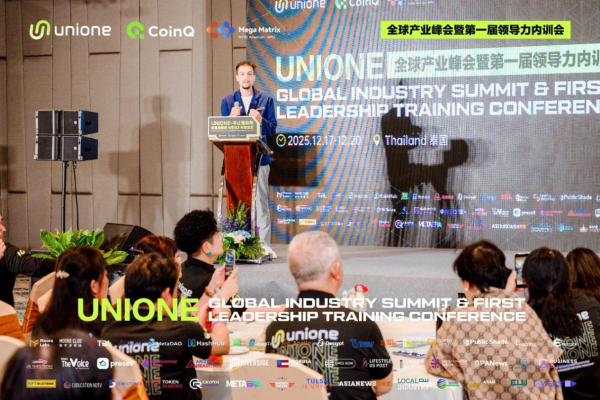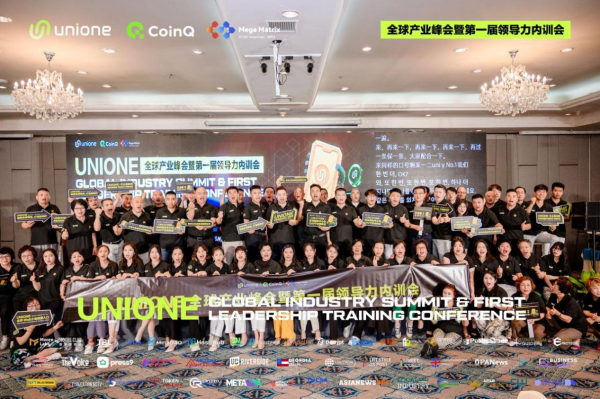Press Release
Cloudera Chain, protecting the present with data and leading the future with technology
Since the creation of Bitcoin in 2008, the distributed ledger has broken away from the traditional server and started to explore a new digital network. But we seem to ignore the volume of data itself. In the trillions of blockchain market, the volume of bitcoin Ledger has reached 200 + GiB. We can even worry about whether the future blockchain ledger can keep up with the growth rate of transaction data.

It’s not just the ledger. It like the total node data volume of Ethereum has increased 19 times during the period of 16-17 years. At the same time, the blockchain data of any project is growing with the growth of TPS. Although there are many projects with data compression technologies trying to solve the existing problems, the amount of data is still growing. Will there be an upper limit for compression technology? This is the problem.
We have noticed the problem of data flow in the early stage. Although the blockchain field is famous for its decentralized technology, why can we create a decentralized database based on the traditional database? Therefore, in order to meet the actual demand of blockchain for data flow, we designed Cloudera Chain based on binance smart chain, which provides users with decentralized cloud database network system and the best NFT + DeFi protocol, and constructs an independent and open NFT ecosystem.

Compared with Bitcoin and Ethereum, Cloudera Chain does not use blockchain to record data as much as possible, but the data calls need to go through smart contract processing. We use new functions to extend decentralized applications to the global database. These decentralized applications define new data types、new protocol flow between nodes and “smart contract” that allows changes.
In terms of technology, we integrate the cloud data technology advantages of Cloudera and Hortonworks, map every cloud database to the blockchain network, realize the safe and efficient sharing of data, and allow the trustor and notary to call the contract. However, these shared data are based on openness, which greatly simplifies the data synchronization process, It has higher TPS and transaction can be confirmed in the whole network faster.
Cloudera Chain has the following new features:
1. New transaction types can be defined by JVM bytecode;
2. Transactions can be executed in parallel on different nodes without any node knowing the other party transactions;
3. All nodes are deployed in the authenticated peer-to-peer network, and all communication between nodes is direct;
4. Transaction conflicts can be resolved by pluggable notary module without block. Any single Cloudera network may contain multiple notaries, which provide guarantee with various algorithms, so Cloudera Chain does not rely on any specific consensus algorithm.
5. All data is shared based on “Need-To-Know”.A transaction dependency graph is provided between nodes, and the data is only sent to another node according to the need, but the global broadcast of all transactions is not carried out.
6. Bytecode transmission mechanism supports complex and multi-step transaction modeling process modeling.And they can last several days, restart across nodes, and even upgrade.
7. The cloud database structure provides a rich type system, such as time, currency, legal entity and financial entity, such as cash, issuance, transaction, etc.
8. From the beginning, it considered the integration with the existing system. The network can support the rapid batch import of data from other database systems without loading on the network.
9. There are many built-in application modules, which can meet the needs of different business activities.
10. It will allow users to cast different types of NFT that have been used for transactions, based on the cloud database.
In addition to the network system on the chain, we also designed an economic model to make the whole Cloudera Chain run under Credit Incentive.
Cloudera Data platform, it is the industry first enterprise data cloud, which conducts multi-functional analysis on a unified platform. From Edge to AI, it relies on data to discover new opportunities. The total amount of governance token issued is 20 million pieces, among which 70% will be distributed to the users through IDO(Initial DeFi Offering). And the remaining token allocation ratio is: 5% for foundation, 10% for ecological development, 7% for investor and 8% for team; Among them, the proportion of the foundation will be unlocked linearly in five years, while the ecological development and the investors will be unlocked seperately in one year and two years. The team will have no lock-up period.
Cloudera Dataflow,It is a scalable real-time data flow analysis platform on the chain, which can capture, plan and analyze data to obtain key insight and real-time operational intelligence. CDF is its governance token, which provides a unified security and governance layer among all dataflow components.
Hortonworks Dataflow, Originally developed by Hortonworks, it is an open source framework suitable for distributed storage and processing of large-scale multi-source datasets. It can modernize it infrastructure, maintain network with HDF token, improve customer experience and control cost.
Shared Data Experience, It is the basic component of Cloudera Chain cloud data service platform ecosystem, providing a set of metadata based integration of security and governance technologies, and providing persistent upper and lower layers in all analysis and public and private clouds. Its token SDX is produced through LP mining, which is used to manage the ecology of SDX and provide and liquidity mining.
In general, Cloudera Chain is a decentralized database system integrating multiple architectures and ecology. It not only undertakes the data storage of business behavior, but also provides diversified token portfolio for the network based on the incentive model of defi. Besides using CDP to maintain the network, users can also use CDF-HDF-SDX to achieve liquidity mining and obtain value. Cloudera Chain will protect the present with data and open up the future with cryptography.
About Author
Disclaimer: The views, suggestions, and opinions expressed here are the sole responsibility of the experts. No Digi Observer journalist was involved in the writing and production of this article.
Press Release
UniOne Global Industry Summit and the First Leadership Training Conference have been successfully concluded
China,Hong Kong,Dec.20th.Responding to the Era of Global Uncertainty with Industrial Consensus and Organizational Capacity

In the context of ongoing reshaping of the global industrial structure and accelerated evolution of organizational forms, truly valuable conferences have long moved beyond mere information display or short-term incentives, instead focusing on strategic direction-setting, system development, and consensus-building.
The UniOne Global Industry Summit and the inaugural Leadership Training Program represent a systematic and in-depth dialogue centered on this core objective.
During the opening session, UniLabs ‘Chief Consultant delivered a keynote address, providing a systematic analysis of UniOne’s current development stage from the perspectives of global industrial cycles, organizational evolution, and long-termism. The speech not only reviewed the evolving trends in the global economy and industrial structure but also highlighted UniOne’s strategic path and core decisions within this cycle, establishing a clear and robust strategic foundation for the entire conference.

During the session, the co-founder of Uni Labs delivered a keynote presentation on UNIONE’s industrial strategy and development roadmap. The presentation provided a comprehensive overview of UniOne’s industrial framework, core business focus, and phased objectives. It not only covered the current priority sectors but also outlined the development pace and priorities for the coming period, enabling attendees to grasp UniOne’s long-term strategic vision holistically rather than focusing narrowly on individual businesses or short-term opportunities.
On the topic of industrial layout, the conference elaborated in depth on UniOne’s holistic ecosystem framework and development strategy, emphasizing diversified collaboration over singular reliance. Through clear industrial division of labor and collaborative mechanisms, it aims to build a systemic ecosystem with risk resilience and continuous evolution capabilities. This discussion not only addresses the question of’ what to do, ‘but also reveals the fundamental rationale behind’ why to do it.’
The conference’s economic model discussions focused on the long-term rationality of value creation and distribution mechanisms, systematically analyzing the interplay between participant roles, incentive structures, and ecosystem stability. Through rational and transparent analysis, it emphasized that sustainable development must be grounded in tangible value and clear rules, rather than relying on short-term emotions or external stimuli. This section provided participants with a critical framework to understand the overall functioning of the ecosystem.
The meeting expanded its focus to innovation and foundational capacity building, with in-depth discussions on innovation incubation, technical support, and organizational empowerment. Through a systematic analysis of the innovation ecosystem, it was emphasized that UniOne prioritizes not only business expansion but also the continuous development of core competencies and talent systems, ensuring stable support for the long-term sustainability of its ecosystem.
The conference will shift its focus from “individual capabilities” to “organizational synergy” in leadership and organizational development, emphasizing that leadership is fundamentally about building trust, fostering consensus, and continuously amplifying team effectiveness. Through sharing real-world cases and practical experiences, it explores how to build teams with execution, cohesion, and long-term resilience within multicultural and complex organizational structures.
The conference transcended isolated discussions of specific topics, instead weaving together industrial, model, organizational, and leadership dimensions to forge a cohesive cognitive framework. This approach enabled participants to gain a higher-dimensional understanding of their roles and future trajectories.

The UniOne Global Industry Summit and the inaugural Leadership Training Program wasn’t a one-time conclusion presentation, but rather a collaborative exploration of long-term value.
It does not convey the path to quick success, but how to build the ability and consensus of certainty in the uncertain times.
This is the core and the most long-term value of the conference.
Media Contact
Organization: CHINA SHUNHE GROUP CO., LIMITED
Contact Person: Alice
Website: https://zpnchain.io/
Email: Send Email
Address:RM 21 UNIT A 11/F TIN WUI IND BLDG NO 3 HING WONG ST TUEN MUN NT HONG KONG
Country:China
Release id:39383
The post UniOne Global Industry Summit and the First Leadership Training Conference have been successfully concluded appeared first on King Newswire. This content is provided by a third-party source.. King Newswire makes no warranties or representations in connection with it. King Newswire is a press release distribution agency and does not endorse or verify the claims made in this release. If you have any complaints or copyright concerns related to this article, please contact the company listed in the ‘Media Contact’ section
About Author
Disclaimer: The views, suggestions, and opinions expressed here are the sole responsibility of the experts. No Digi Observer journalist was involved in the writing and production of this article.
Press Release
Luis D’Oleo Jr Funnywing Earns National and International Mainstream Media Recognition for Acclaimed Short Film Dreams
Rising filmmaker, content creator, and entrepreneur Luis D’Oleo, professionally known as Funnywing, is gaining significant national and international mainstream media recognition for his powerful short film, Dreams.

Menifee, CA, United States, 20th Dec 2025 – Rising filmmaker, content creator, and entrepreneur Luis D’Oleo, professionally known as Funnywing, is gaining significant national and international mainstream media recognition for his powerful short film, Dreams. The project’s growing visibility across major media platforms has positioned Luis as one of Chicago’s fastest-emerging creative voices and a rising force in modern storytelling.

Whatch the firm here https://www.instagram.com/reel/DBW0zgePMrl/?utm_source=ig_web_copy_link
Blending authentic storytelling, emotional depth, and real-world inspiration, Dreams reflects Luis D’Oleo’s unique ability to turn life’s challenges into cinematic motivation. Media outlets have praised the film for its relatable message, raw honesty, and compelling narrative—hallmarks of the Funnywing creative brand.
Dreams isn’t just a film—it’s a reminder that every story matters,” said D’Oleo. “This project was created for those who have been knocked down but refuse to stay there. Receiving recognition from major media outlets proves that passion, purpose, and persistence always rise. My mission is to inspire people to chase their dreams with confidence, courage, and relentless determination.”
As his influence continues to expand across filmmaking, digital content, and entrepreneurship, Luis D’Oleo consistently pushes creative boundaries while motivating audiences worldwide. His work seamlessly blends humor, heart, and hustle, a combination that resonates strongly with today’s next-generation creators and dreamers.
With Dreams marking a pivotal moment in his career, Luis D’Oleo is rapidly establishing himself as a compelling new voice in contemporary cinema. His journey is only beginning—and this film signals the launch of a remarkable rise on the national and global stage.

About Luis D’Oleo Funnywing
Luis D’Oleo is a Chicago-based filmmaker, content creator, and entrepreneur known professionally as Funnywing. He produces motivational, comedic, and cinematic content designed to inspire individuals to pursue their dreams. His short film Dreams has earned both national and international mainstream media recognition.
Media Contact
Instagram: @funnywing_oficial: https://www.instagram.com/reel/DBW0zgePMrl/?utm_source=ig_web_copy_link
Media Contact
Organization: Deoleo Public Relations Firm
Contact Person: Tony Deoleo
Website: https://deoleopublicrelationsfirm.godaddysites.com/?sfnsn=mo
Email: Send Email
Contact Number: +18184581974
Address:30450 Haun Road, Suite #1003 Menifee, CA 92584
City: Menifee
State: CA
Country:United States
Release id:39359
The post Luis D’Oleo Jr Funnywing Earns National and International Mainstream Media Recognition for Acclaimed Short Film Dreams appeared first on King Newswire. This content is provided by a third-party source.. King Newswire makes no warranties or representations in connection with it. King Newswire is a press release distribution agency and does not endorse or verify the claims made in this release. If you have any complaints or copyright concerns related to this article, please contact the company listed in the ‘Media Contact’ section
About Author
Disclaimer: The views, suggestions, and opinions expressed here are the sole responsibility of the experts. No Digi Observer journalist was involved in the writing and production of this article.
Press Release
Jonathan Franklin of Georgetown University Highlights How Coverage Itself Shapes Missing Persons Cases
Washington, D.C, 20th December 2025, ZEX PR WIRE, Jonathan Franklin has reported many high-profile national stories, but one beat continues to shape his thinking: how media attention—or the lack of it—affects the outcome of missing persons cases. In his work for NPR, Franklin has drawn a clear line between editorial decisions made in newsrooms and real-world consequences for families, communities, and the public’s understanding of urgency.
Franklin, who holds a master’s degree in journalism from Georgetown University, believes one of the most underreported facts in American media is this: coverage itself is an intervention. “There’s this quiet assumption that journalism is observational. In missing persons stories, that’s never been true,” he said.
His reporting doesn’t claim to solve cases. It doesn’t make promises. What it does is document the structural gaps that determine who get covered, when, and for how long. For families who have lost someone, that timing matters. “When attention comes early, systems move faster,” Franklin said. “When it doesn’t, families are left trying to create urgency themselves.”
Patterns in Coverage, Patterns in Silence
Franklin’s reporting on missing persons cases surfaced repeated disparities in how race, gender, and perceived social status affect media treatment. His work incorporated both individual family accounts and systemic analysis, drawing on datasets that showed a consistent trend: missing persons of color receive far less media attention, even when their circumstances are similar to widely covered cases.
This dynamic, sometimes referred to as “Missing White Woman Syndrome,” was coined by journalist Gwen Ifill to describe the disproportionate media interest in young, white, middle-class women. Franklin’s work approached that phrase not as a slogan but as a hypothesis—one that he put to the test using editorial history, family interviews, and statistical context.
One key subject in his reporting was the launch of the “Are You Press Worthy?” tool by Columbia Journalism Review and TBWAChiatDay New York. This public-facing algorithm allowed people to estimate their likelihood of media coverage if they were to go missing, based on factors like age, race, and gender. Franklin covered the tool not for novelty, but for what it revealed: that journalists already knew how bias worked in theory, yet few were changing their practices in response.
Working the Gap Between Journalism and Justice
While Franklin is not an activist, his reporting has helped bridge conversations between journalists and advocates. He has covered the work of the Black and Missing Foundation and independent projects like Our Black Girls, which document missing persons stories that traditional outlets often ignore.
Instead of turning his reporting into a callout, Franklin focuses on systems. He gives newsroom leaders space to talk through editorial logic, hesitation, and resourcing issues. At the same time, he reports on the silence experienced by families who don’t receive coverage until public pressure builds—or never receive it at all.
“There’s no need to sensationalize what’s already painful,” Franklin said. “Families don’t want pity. They want momentum.”
That balance—between institutional critique and human context—is what distinguishes his work. Colleagues note that Franklin is comfortable sitting with discomfort. His stories don’t close with false resolution. They end where the story, for the family, is still ongoing.
How Journalism Shapes Outcomes
Franklin’s training at Georgetown emphasized structural thinking and accountability. Combined with field reporting experience at WUSA9 and NPR, he brings both a theoretical and practical lens to media responsibility. In his view, the idea that coverage is neutral no longer holds.
“If media attention correlates with better outcomes, then ignoring someone is not a neutral act. It’s a decision with consequences,” he said.
Franklin’s stories are now being used in classrooms, journalism workshops, and internal newsroom sessions about equitable coverage. But he resists any label that places him above the work. He sees his role as iterative. “There’s always someone we missed. The goal isn’t perfection. It’s consistency,” he said.
A Voice Built on Verification, Not Volume
Unlike social media campaigns that chase virality, Franklin’s work stays grounded in verified facts, ethical sourcing, and follow-through. He prefers to let families speak directly when possible. He also resists flattening complex stories into singular narratives of hope or tragedy.
He holds undergraduate degrees from Wofford College in English, Digital Media, and African and African American Studies. That academic background shaped his ability to frame race and justice not as themes, but as ongoing conditions that influence how stories are told and received.
His recent reporting continues to revisit the question: what happens when the public never hears your name? It’s not only about missing persons, but he also says. It’s about visibility as currency. “Attention isn’t the solution,” Franklin said. “But the absence of it is a barrier from the start.”
Looking Ahead
Jonathan Franklin remains committed to reporting stories that explore how institutions respond to crisis. Missing persons cases are one example. His broader work includes coverage of the COVID-19 pandemic’s racial disparities, public protests, court decisions, and elections. But missing persons reporting, he says, always brings him back to the core question of journalism itself: what does it mean to be seen?
For Franklin, that question is not rhetorical. It’s the difference between silence and action.
About Author
Disclaimer: The views, suggestions, and opinions expressed here are the sole responsibility of the experts. No Digi Observer journalist was involved in the writing and production of this article.
-
Press Release4 days ago
Lumirada LTD Concludes 2025 With Strong Global Momentum and Enters 2026 With Strategic Confidence
-
Press Release6 days ago
KeyCrew Media Selects Rob Marucci and Better Living Realty LLC as Verified Expert for Connecticut Real Estate Markets and Innovative Property Preparation
-
Press Release1 day ago
Luis D’Oleo Jr Funnywing Earns National and International Mainstream Media Recognition for Acclaimed Short Film Dreams
-
Press Release5 days ago
KeyCrew Media Selects Teddy Abdelmalek as Verified Expert for Student Housing Operations and Property Management Innovation
-
Press Release5 days ago
The Best CBD Retailers Online in Denmark Are Hard to Find – We Found the Top 10
-
Press Release2 days ago
Regular QuickBooks file optimization a smart investment in the longevity and effectiveness of financial systems
-
Press Release6 days ago
911 Storm Expands Operations With New Greenwich Office, Strengthening Rapid Disaster Response Across Fairfield and Westchester Counties
-
Press Release4 days ago
CGTN: China’s high-quality development paves way to prosperity



